Our Rich Culture Class 4 Notes SST
| Table of contents |

|
| Introduction |

|
| Geographical Location and Size |

|
| India’s Neighboring Countries |

|
| Political Divisions of India |

|
| Physical Divisions of India |

|
| Knowing India |

|
Introduction
India is a vast and diverse country located in the continent of Asia. It is not just a land of different cultures, languages, and traditions, but also of varied landscapes, from towering mountains to expansive plains, deserts, and beautiful coastal areas. Let’s explore more about India’s geography, political divisions, and its neighbors.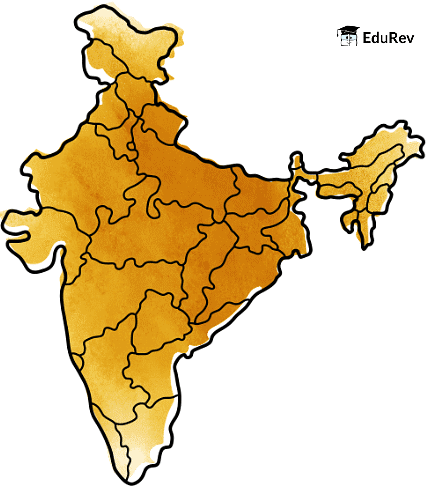
Geographical Location and Size
India holds a significant position on the global map for several reasons:
- Location: India is located in Asia, which is the largest continent in the world. Specifically, India lies in the southern part of Asia.
- Size: India is the seventh-largest country in the world by area. This means that only six other countries in the world are bigger than India in terms of land. Additionally, India is the second-largest country in the world by population, which means it has more people living in it than almost any other country, except China.
Understanding Size with Examples:
- Imagine a large playground. Now, imagine that India is seven times bigger than that playground compared to other countries.
- When we talk about the population, picture a crowded market. India has many such "crowded markets" compared to most other countries!
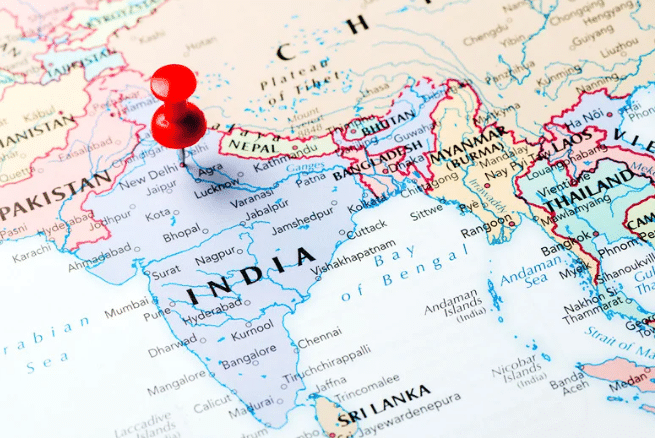
Natural Boundaries
India is naturally protected by several geographical features:
The Himalayas:
- The Himalayas are a massive mountain range in the northern part of India. These mountains are among the highest in the world, with many peaks covered in snow throughout the year.
- The Himalayas act as a natural barrier, protecting India from the cold winds coming from the north and also from invasions in ancient times.
- Think of the Himalayas as a giant, protective wall that stands tall and strong, keeping India safe.
Peninsular India:
- The southern part of India is known as a peninsula. A peninsula is a piece of land surrounded by water on three sides.
- In the case of India:
- The Arabian Sea lies to the west.
- The Bay of Bengal lies to the east.
- The Indian Ocean lies to the south.
- Picture India as a piece of land stretching into the ocean, with water gently touching its three sides. This makes the southern tip of India very special.
Southernmost Point:
- Kanniyakumari is the southernmost point of the Indian mainland. It’s where you can see the sunrise and sunset over the water from the same spot.
- Beyond the mainland, the southernmost tip of India is Indira Point in the Andaman and Nicobar Islands. This is the last piece of land before the vast ocean begins.
India’s Neighboring Countries
India shares its borders with several other countries, making it a significant player in Asia. 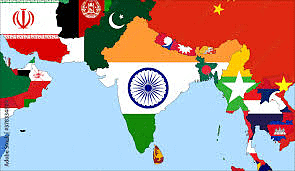
Let’s look at these neighboring countries:
Land Neighbors:
- Pakistan: Located to the northwest of India.
- Afghanistan: Shares a small border with India in the northwest.
- China: Lies to the north, across the Himalayas.
- Nepal: A small country located in the Himalayas, to the north of India.
- Bhutan: Another small Himalayan country, also to the north.
- Myanmar: Located to the east of India, also known as Burma.
- Bangladesh: Located to the east, it shares a long border with India.
Visualizing the Neighbors:
- Imagine standing in the middle of a large field. Around you, in different directions, are different people (countries). Some are close by, like Pakistan and Bangladesh, while others are a bit farther, like Afghanistan and Myanmar.
Sea Neighbors:
- Sri Lanka: An island country located to the southeast of India. It is separated from India by a narrow stretch of water known as the Palk Strait.
- Maldives: A group of islands located southwest of India in the Indian Ocean.
Picture the Sea Neighbors:
- Think of Sri Lanka and the Maldives as two friendly islands across the sea, waving hello to India from a distance.
Political Divisions of India
India is not just a single large country; it is divided into several smaller regions to make it easier to govern and manage.
Independence and Formation:
- India became an independent country on 15th August 1947. This means that before this date, India was not a free country and was ruled by the British.
- After independence, India was divided into states and Union Territories. Each state has its own government, while Union Territories are directly governed by the Central Government of India.
States and Union Territories:
- India has 28 states and 8 Union Territories.
- Each state has a capital where the government of that state works. For example, the capital of Maharashtra is Mumbai, and the capital of West Bengal is Kolkata.
- The Union Territories are special regions that are governed directly by the Central Government. For example, the National Capital Territory (NCT) of Delhi is a Union Territory and the capital of India.
Understanding States and UTs:
- Imagine India as a big house with many rooms. Each room (state) has its own leader (government), and some rooms (Union Territories) are directly taken care of by the head of the house (Central Government).
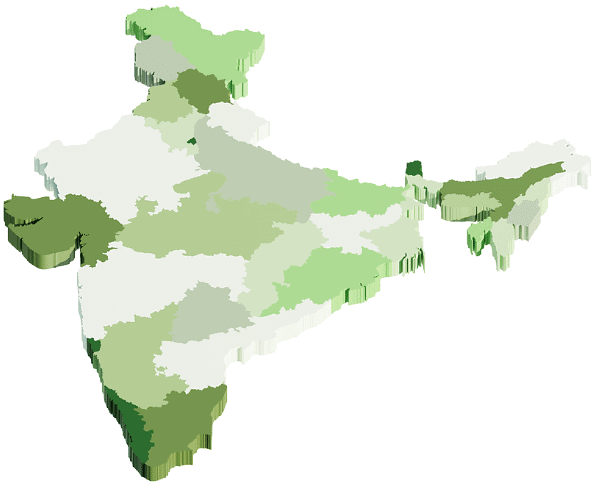
- Imagine India as a big house with many rooms. Each room (state) has its own leader (government), and some rooms (Union Territories) are directly taken care of by the head of the house (Central Government).
Largest and Smallest States:
- Rajasthan: The largest state in India by area.
- Goa: The smallest state in India by area.
Fun Fact:
- Rajasthan is like a big giant in terms of size, while Goa is like a tiny but beautiful gem.
The Seven Sisters:
- The northeastern part of India is home to seven unique states, known as the Seven Sisters: Arunachal Pradesh, Assam, Manipur, Meghalaya, Mizoram, Nagaland, and Tripura.
- These states are known for their beautiful landscapes, rich cultures, and diverse traditions.
New State Formation:
- Telangana: The newest state of India, formed in 2014, was carved out of Andhra Pradesh. Hyderabad is its capital.
Understanding Telangana:
- Telangana was like a new room added to the house of India, with Hyderabad as its central spot.
Physical Divisions of India
India's land is not the same everywhere. It has different types of landforms, each with its unique features. These can be broadly divided into five main physical divisions:
The Northern Mountains:
This includes the mighty Himalayas, which stretch across the northern part of India. These mountains are home to some of the highest peaks in the world, like Mount Everest.
The Himalayas are like the crown of India, with snow-capped peaks that touch the sky.
The Plains:
- Northern Plains: These are flat, fertile lands where many of India’s major rivers, like the Ganges, flow. These plains are great for farming.
- Coastal Plains: These are flat lands along the coastline of India, near the Arabian Sea, Bay of Bengal, and Indian Ocean.
- The plains are like the heart of India, where crops grow, and rivers flow, providing food and water to the people.
The Western Desert:
Known as the Thar Desert, this desert is located in the western part of India, mainly in Rajasthan. It is a vast area of sand with little water but rich in culture and history.
The desert is like a large sandy playground, where the sun shines brightly, and the land stretches as far as the eye can see.
The Southern Plateaus:
The Deccan Plateau forms a large part of southern India. It is a high, flat area of land, surrounded by hills and rich in minerals.
The plateau is like a sturdy table, standing tall and strong in the southern part of India.
The Islands:
India has several islands, such as the Andaman and Nicobar Islands in the Bay of Bengal and the Lakshadweep Islands in the Arabian Sea. These islands are small but full of natural beauty and marine life.
The islands are like small jewels scattered in the ocean, each with its own unique charm and beauty.
Knowing India
LanguagesIn India, people speak many different languages. There are 22 languages officially recognized by the government. 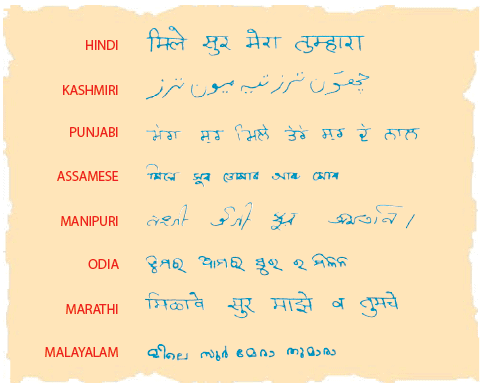 Each language has a set of letters in which it is written. This set of letters is called script.
Each language has a set of letters in which it is written. This set of letters is called script.
- Hindi and English are the main ones used for official purposes.
- Some languages, like Kashmiri and Urdu, are written from right to left instead of left to right.
Dresses
People in India wear a variety of clothes.
- For women, common outfits include sarees, which are long pieces of cloth wrapped around, and salwar-kameez, which are loose-fitting pants with a matching top. They also wear skirts.
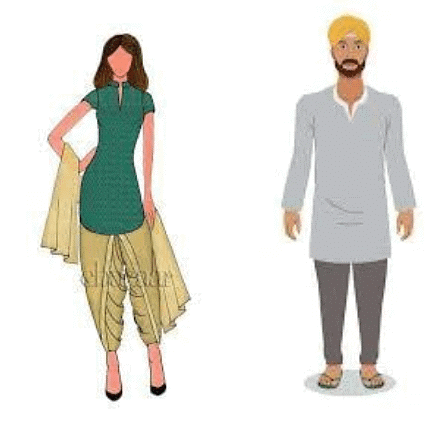
- Men usually wear jeans and shirts, but sometimes they wear kurta-pyjama sets or turbans, especially on special occasions.
Dances
In India, there are two main types of dances: folk and classical.
- Folk dances are performed during happy occasions like weddings and festivals, where people come together to celebrate.
- Classical dances have a long history and were first performed in temples as a form of worship.
- Some famous classical dancers are Pandit Birju Maharaj and Sharmila Biswas.
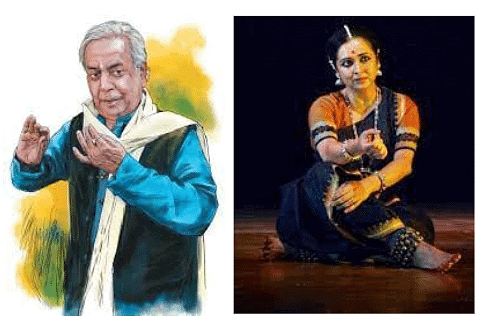 Pandit Birju Maharaj(left) and Sharmila Biswas(right)
Pandit Birju Maharaj(left) and Sharmila Biswas(right)
Music
Indian music comes in two flavors: folk and classical.
- Folk music is like the songs passed down through generations, reflecting the local culture and traditions. Examples include Bihugeet and Baul sangeet.
- Classical music, on the other hand, has more structured styles called Hindustani and Carnatic.
- Hindustani music is from the north, while Carnatic music comes from the south. Famous singers include Anand Bhate and Ranjani-Gayatri.
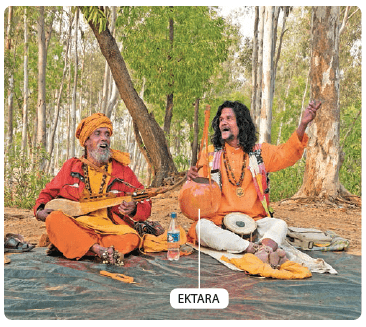 Ektara is a commonly used musical instrument in Baul sangeet.
Ektara is a commonly used musical instrument in Baul sangeet.
Monuments
India is home to many old and new monuments, each with its own story to tell.
- Ancient monuments, like the stupa at Sanchi and the Taj Mahal, give us a glimpse into the past and showcase incredible craftsmanship.

- Modern monuments, such as the Akshardham Temple, continue to amaze visitors with their architectural beauty and spiritual significance.
Edurev Tips:
- Hindi / Telugu is the official language of India.
- Women / Men wear turbans.
- Dances performed on festivals are called classical / folk dances.
- Classical music is of two / three types.
- The stupa at Sanchi was built by Emperor Ashoka / Akbar.
Paintings
Indians have been creating art for centuries.
- Early paintings, found in caves, depict scenes from ancient life.
- During the Mughal era, artists were inspired to paint intricate scenes from everyday life.
- Today, modern painters like Paresh Maity and Anjolie Ela Menon carry on this rich tradition, adding their own unique styles to the canvas.
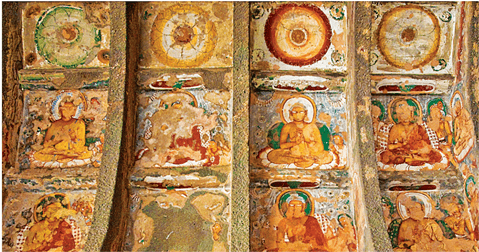 Cave paintings at Ajanta
Cave paintings at Ajanta
Handicrafts
Handicrafts are special items made by hand, each telling a story of craftsmanship and tradition.
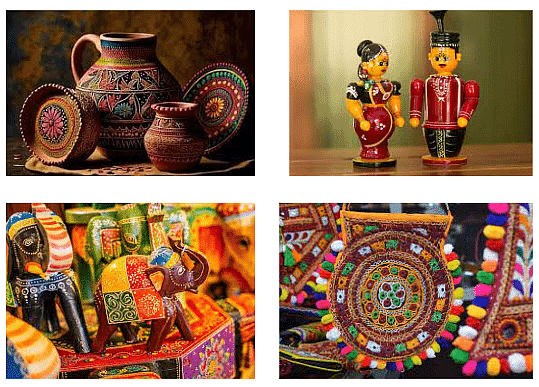 Different types of handicrafts
Different types of handicrafts
- Examples include terracotta horses, crafted with clay in West Bengal, and Kanchipuram sarees, woven with skill in Tamil Nadu.
- These handicrafts not only showcase the talent of the artisans but also preserve India's cultural heritage.
Festivals
Festivals are a big part of life in India, bringing people together in celebration and joy.
There are four main types of festivals: national, religious, harvest, and special.
- National festivals like Independence Day and Republic Day unite the country in patriotic fervor.
- Religious festivals, such as Diwali and Christmas, celebrate different faiths and traditions. Harvest festivals like Baisakhi and Onam mark the seasons and the bounty of nature.
- Special festivals, like the Taj Mahotsav and the Desert Festival, showcase the rich cultural diversity of India and attract tourists from all over the world.
- Harvest festivals in India are joyous celebrations that mark the end of the agricultural season and the bountiful harvest of crops. These festivals are deeply rooted in Indian culture and traditions, reflecting the agrarian way of life and the importance of farming in the country. Examples include Pongal, Bihu, Onam, Baisakhi.
Edurev Tips:
- The Constitution of India recognizes 22 languages.
- Women and men wear different dresses. Men also wear turbans.
- Folk and classical dances are popular in India.
- Hindustani and Carnatic are the two styles of classical music in India.
- The beautiful monuments of India attract many tourists.
- India has a rich tradition of painting and handicrafts.
- Many national, religious, harvest and special festivals are celebrated in India.
Key Facts and Summary
- India is a large and diverse country located in Asia, surrounded by natural boundaries like the Himalayas and major water bodies.
- India shares its land borders with countries like Pakistan, China, Nepal, and others, and has sea neighbors like Sri Lanka and Maldives.
- Politically, India is divided into 28 states and 8 Union Territories, with each state having its own capital.
- Physical divisions of India include the Northern Mountains, Plains, Western Desert, Southern Plateaus, and Islands, each contributing to the rich geography of the country.
Conclusion
India is a country that is not only vast in size but also rich in diversity. From its towering mountains to its expansive deserts, fertile plains, and beautiful islands, India’s geography plays a crucial role in its history, culture, and development. Understanding these aspects of India helps us appreciate the country even more.
|
50 videos|246 docs|46 tests
|
FAQs on Our Rich Culture Class 4 Notes SST
| 1. What are the geographical location and size of India? |  |
| 2. Which countries border India? |  |
| 3. How is India politically divided? |  |
| 4. What are the physical divisions of India? |  |
| 5. What is the significance of India's rich culture? |  |















